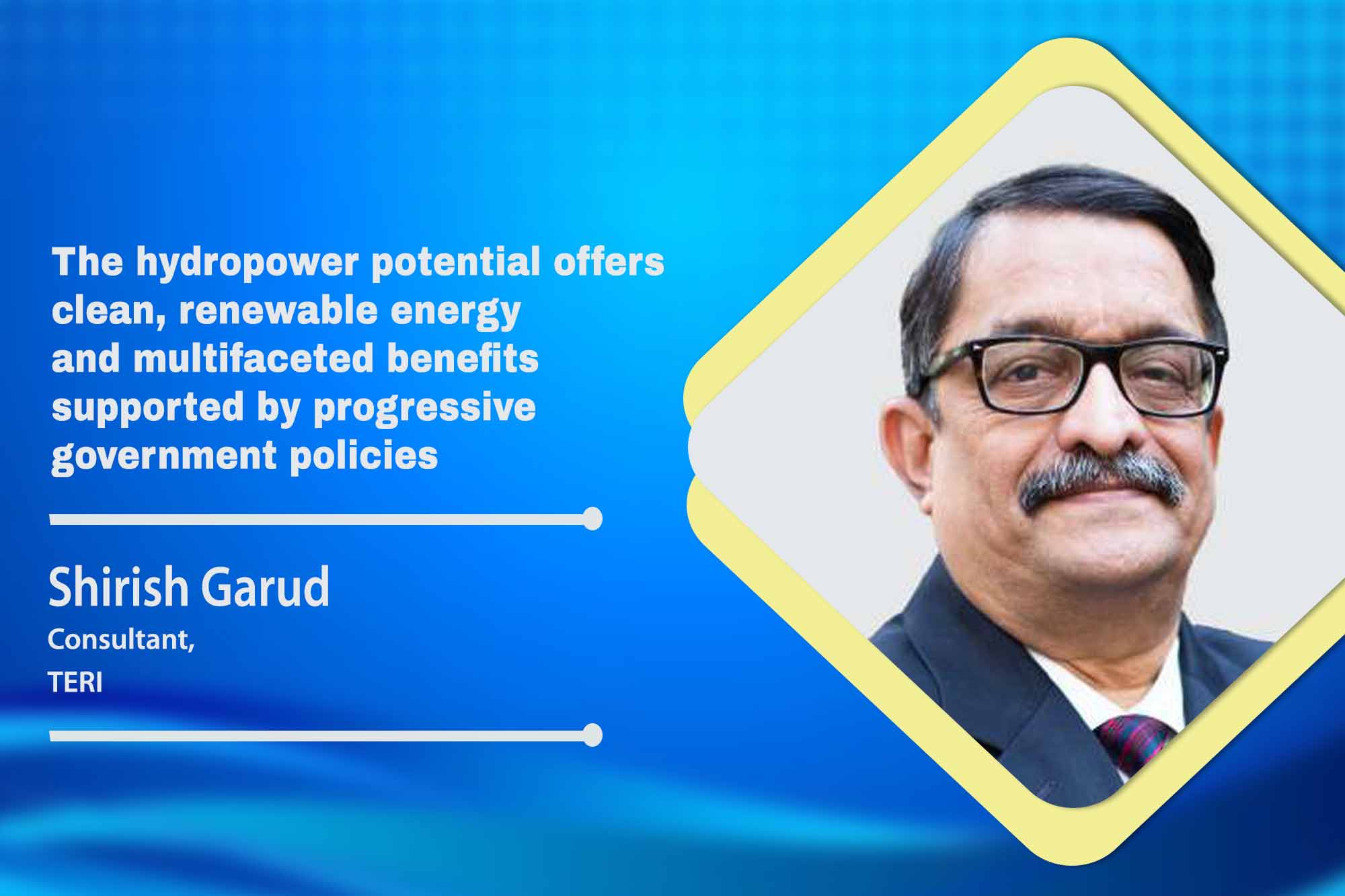Shirish Garud highlights India’s vast hydropower potential
By EPR Magazine Editorial March 27, 2024 11:42 am IST
By EPR Magazine Editorial March 27, 2024 11:42 am IST

The hydropower potential offers clean, renewable energy and multifaceted benefits supported by progressive government policies.
According to the Central Electricity Authority (CEA), India has the potential for 148.7 GW installed capacity hydropower, out of which we have 46928.17 MW (46.93 GW) installed capacity for large (more than 25 MW capacity) hydropower plants. Also, 56 pumped storage system sites with an aggregate capacity of 96,000 MW have been identified. Hydropower allows us pollution-free, clean, renewable electricity generation using locally available energy resources. The projects also provide options for other services like drinking water storage, irrigation facilities through canals, flood management, etc.
Earlier, the government had taken several policy initiatives for hydropower development in the country, viz., Policy on Hydropower Development 1998, National Electricity Policy 2005, National Tariff Policy 2016, National Rehabilitation and Resettlement Policy 2007 and Right to Fair Compensation and Transparency in Land Acquisition, Rehabilitation and Resettlement Act 2013. Subsequently, the government also issued measures to promote the Hydro Power Sector on 8th March 2019, under which the following provisions have been made:- Declaring Large Hydro Projects (>25 MW) as Renewable Energy sources. Tariff rationalisation measures for bringing down hydropower tariff. Budgetary Support for Flood Moderation/ Storage Hydro Electric Projects (HEPs). Budgetary Support to Cost of Enabling Infrastructure, i.e., roads/bridges. Subsequently, the government notified the Hydro Purchase Obligation (HPO) trajectory for the period 2021-22 to 2029-30 on 29th January 2021. Shirish Garud shares insights into the industry with the EPR Magazine.
How can India balance energy needs with preserving ecology in hydro projects?
Hydro projects are often criticised for impacting ecology and displacement of the local population. These two major challenges have now been answered through Policy and regulatory provisions of mandatory clearances required by providing suitable mitigation measures. Developing large hydropower projects offers us the possibility of enhanced energy security and self-reliance. These are also pollution-free and high availability technologies. Hydro projects often have more than 50 years of life and low operational costs. Thus, they provide a good option for developing large-scale energy generation using renewable energy resources. On the other hand, we have stringent laws for ecologically sensitive areas, including a range of mitigation activities. The mitigation activities also include compensatory afforestation, relocation or rehabilitation of flora and fauna, etc.
What are some key benefits of large hydro projects, and how do they contribute to local communities and grid management?Large hydro projects must fulfil the impact Assessment (IA) Report requirement, which is also expected to assess the impact on ecology and community. The report must also include suitable measures to mitigate these impacts, and suitable agencies must monitor the implementation of these measures. Local communities benefit from these developments through access to infrastructure, such as roads developed during construction, electricity generated, employment generation, and the CSR activities carried out by the companies developing hydropower projects in the region. Hydro storage technologies are known for their large capacity storage, quick ramp-up and ramp-down characteristics, longer life, marginal loss of capacity after years of use, and no issue of waste creation and disposal. Thus, they are an ideal choice for large-scale grid-level storage that can be used for grid management, frequency control, and ancillary services.
How could the expansion of hydropower contribute to India’s ambitions to meet its renewable energy objectives?
Hydropower is now globally classified as renewable power.The Power Ministry has recognised this fact by declaring that large hydropower projects ( more than 25 MW) would also fall under the renewable energy project vide its office memorandum No. 15/2/2016-H-I (Pt) dated 8 March 2019. It has also announced special hydropower RPO for large projects commissioned after 8 March 2019, including pumped hydro storage projects. This will boost new hydro projects by creating demand for the electricity produced by these projects. These also include pumped hydro storage plants.
Spokesperson: Shirish Garud, Consultant – TERI
We use cookies to personalize your experience. By continuing to visit this website you agree to our Terms & Conditions, Privacy Policy and Cookie Policy.